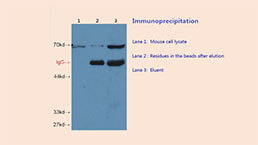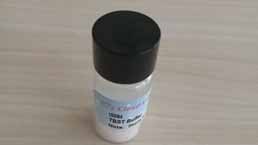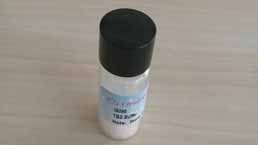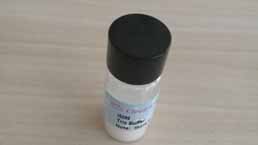Native Pepsin (PP) 

Overview
Properties
- Product No.NPA632Hu01
- Organism SpeciesHomo sapiens (Human) Same name, Different species.
- ApplicationsPositive Control; Immunogen; SDS-PAGE; WB.
Research use only - Downloadn/a
- CategoryEnzyme & KinaseMetabolic pathwayTumor immunityGastroenterology
- SourceNatural extract
- Subcellular LocationSecreted
- HostHuman (Stomach)
- Molecular Mass n/a, Accurate n/a(Analysis of differences refer to the manual)
- Buffer FormulationPBS, pH7.4, containing 0.01% SKL, 1mM DTT, 5% Trehalose and Proclin300.
- Traits Freeze-dried powder, Purity > 95%
- Isoelectric Pointn/a
Share your citation
Upload your experimental result
Review
Leave a message
Loading...
Sign into your account
Share a new citation as an author
Upload your experimental result
Review
Please attach serial No. on instruction manual


Contact us
Please fill in the blank.
Name*
Organization
Address
E-mail address*
Telephone
Inquiry*
Verification code*

Formula
Usage
Reconstitute in 10mM PBS (pH7.4) to a concentration of 0.1-1.0 mg/mL. Do not vortex.
Storage
Avoid repeated freeze/thaw cycles. Store at 2-8°C for one month. Aliquot and store at -80°C for 12 months.
Stability
The thermal stability is described by the loss rate. The loss rate was determined by accelerated thermal degradation test, that is, incubate the protein at 37°C for 48h, and no obvious degradation and precipitation were observed. The loss rate is less than 5% within the expiration date under appropriate storage condition.
Increment services
-
 BCA Protein Quantification Kit
BCA Protein Quantification Kit
-
 Molecular Mass Marker for Protein
Molecular Mass Marker for Protein
-
 Monoclonal Antibody Customized Service
Monoclonal Antibody Customized Service
-
 Polyclonal Antibody Customized Service
Polyclonal Antibody Customized Service
-
 Protein Activity Test Experiment Service
Protein Activity Test Experiment Service
-
 Immunoprecipitation (IP) Experiment Service
Immunoprecipitation (IP) Experiment Service
-
 TBST Buffer
TBST Buffer
-
 TBS Buffer
TBS Buffer
-
 TRIS Buffer
TRIS Buffer
-
 Spike RBD Protein (S-RBD)
Spike RBD Protein (S-RBD)
-
 Protein G
Protein G
-
 Protein A
Protein A
Citations
- LEVEL OF PEPSIN AND BILE ACIDS IN THE SALIVA OF PATIENTS WITH GLOTTIS T1 CARCINOMASzd:Source
- Higher levels of total pepsin and bile acids in the saliva as a possible risk factor for early laryngeal cancerPubmed:Pmc4362607
- Pepsin and bile acids in saliva in patients with laryngopharyngeal reflux – a prospective comparative studyPubMed: 25516364
- Does Positioning Affect Tracheal Aspiration of Gastric Content in Ventilated Infants?PubMed: 25313850
- Detecting Laryngopharyngeal Reflux by Immunohistochemistry of Pepsin in the Biopsies of Vocal Fold Leukoplakiapubmed:28756936
- Label-Free Detection of Salivary Pepsin Using Gold Nanoparticle/Polypyrrole Nanocoral Modified Screen-Printed ElectrodePubmed:29882917
- Association between Pepsin in Bronchoalveolar Lavage Fluid and Prognosis of Chronic Fibrosing Interstitial Lung Disease
- Pulmonary aspiration in preschool children with cystic fibrosisPubmed: 30558606
- Association of Bile Acid and Pepsin Micro-aspiration with Chronic Obstructive Pulmonary Disease ExacerbationPubmed: 31423141
- Optimization of Saliva Collection and Immunochromatographic Detection of Salivary Pepsin for Point-of-Care Testing of Laryngopharyngeal RefluxPubmed: 31935973
- Presence of pepsin in laryngeal tissue and saliva in benign and malignant neoplasmsPubmed: 33103719
- Relationship Between Pepsin Expression and Dysplasia Grade in Patients With Vocal Cord LeukoplakiaPubmed: 32692278
- Association of pepsin and DNA damage in laryngopharyngeal reflux-related vocal fold polypsPubmed: 32889371
- The relationship between laryngopharyngeal reflux based on pepsin value and clinical characteristics of laryngeal cancer patients
- The Role of Salivary Pepsin in the Diagnosis of Gastroesophageal Reflux Disease (GERD) Evaluated Using High-Resolution Manometry and 24-Hour?¡33220027
- Pepsin properties, structure, and its accurate measurement: a narrative review
- The Impact of Laryngopharyngeal Reflux on Occurrence and Clinical Course of Recurrent Respiratory Papillomatosis34338331
- Bronchoalveolar lavage (BAL) amylase and pepsin levels as potential biomarkers of aspiration pneumoniaPubmed:35715334
- Transcutaneous Electrical Acustimulation Improved the Quality of Life in Patients With Diarrhea-Irritable Bowel SyndromePubmed:35088760






